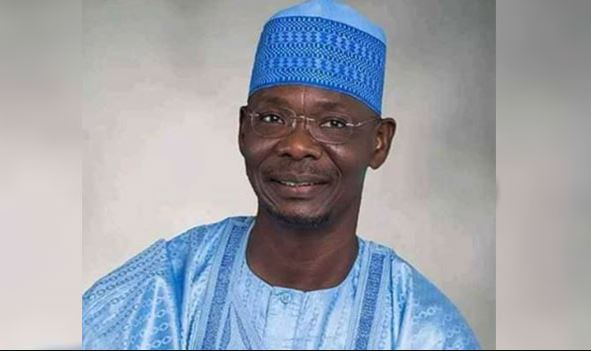NO | LGA | Town | LGA Chairman |
|---|---|---|---|
1 | Awe | Awe | Hon. Usman Umar |
2 | Doma | Doma | Ahmed Sarki Usman |
3 | Karu | Karu | Hon James Thomas |
4 | Keana | Keana | Hon. Sanusi Abdul Giza |
5 | Keffi | Keffi | Alhaji Muhammad Baba-Shehu |
6 | Kokona | Kokona | Alh. Awalu Adamu |
7 | Lafia | Lafia | Alh. Aminu Mu'azu Maifata |
8 | Nasarawa | Nasarawa | Hon. Mohammed Sani Otto |
9 | Nasarawa-Egon | Nasarawa-Eggon | Muhammad Idris Danlami |
10 | Obi | Obi | Mr Joshua Ozhe-Yekpowudu |
11 | Toto | Toto | Mr Aliyu Tashas |
12 | Wamba | Wamba | Asiru Bala Suleiman |
13 | Akwanga | Akwanga | Mr Safiyanu Isah-Andaha |
What Are The Main Economic Activities In Each LGA?
Agriculture
Agriculture remains the dominant economic force throughout most of Nasarawa State. Fertile land and a conducive climate make it ideal for cultivating a variety of crops. Subsistence farming, where families grow food for their consumption, is across the board.
However, commercial agriculture is also gaining traction, with a focus on crops like yams, cassava, rice, maize (corn), and guinea corn. Some LGAs, like Doma and Keffi, are known for their large-scale production of these staples.
Livestock And Cash Crops
Livestock rearing, particularly cattle, sheep, and goats, is another significant economic activity, especially in the northern LGAs like Karu and Awe.
The presence of grazing fields and the Nasarawa Beef Processing Company in Karu further strengthens this sector. Cash crops like cotton, groundnuts, and sesame seeds are also cultivated in specific regions, contributing to the state’s agricultural diversity.
While agriculture is the backbone, other sectors play important roles in some LGAs. Lafia, the state capital, is a hub for commerce and administration, attracting businesses and government offices.
Karu, due to its proximity to the Federal Capital Territory, Abuja, is experiencing a boom in the service industry, including transportation and hospitality.
READ ALSO: Complete List Of LGA In Ebonyi State, Capital, And LGA Chairmen
Mineral Resources
Nasarawa is rich in mineral resources, with deposits of gold, lead, barite, and salt found in various LGAs. Mining activities contribute to the economic landscape, particularly in Toto LGA, where salt production is a significant source of income. However, responsible mining practices are required to ensure environmental sustainability.
Tourism Potential
Nasarawa boasts a wealth of natural beauty, with waterfalls, caves, and scenic geographies offering immense potential for tourism development.
Keffi, home to the Agwatashi Rock formation, and Wamba, with its rich cultural heritage, are examples. Promoting ecotourism could create new economic opportunities while preserving the environment.
What Are The Geographical Features Of Each LGA?
Here’s a breakdown of the key geographical features you’ll encounter in each LGA:
Northern LGAs:
Akwanga, Wamba, and Nasarawa Eggon have the scenic Mada rolling hills, a series of sloping highlands reaching up to 1200 meters. These hills contribute to cooler temperatures and provide dazzling vistas.
Karu and Keffi, bordering the Jos Plateau, have slightly higher elevations with scattered hill ranges flanking their northwest borders.
Central LGAs:
Lafia, the capital city, enjoys a relatively flat terrain with occasional hills, located along the banks of the mighty River Benue. This essential water source shapes the city’s development.
The landscape of Nasarawa LGA is more dissected, featuring valleys and plains interspersed with low-lying hills. Kokona LGA is known for the prominent Rafin Gabas hills which add an ecological dimension to the region.
Southern LGAs:
Doma features a landscape dominated by savanna grasslands with scattered woodlands, ideal for agricultural activities due to its warmer climate. Awe and Toto, the southernmost LGAs, share a similar geography with a combination of low-lying plains and isolated hills.
The impressive River Benue forms a significant portion of Nasarawa State’s southern border, influencing the vegetation patterns in these regions.
And, Obi LGA transitions between the southern Guinea savanna and areas with thicker vegetation to create a unique ecological zone for diverse plant and animal life.
READ ALSO: List Of Governors Of Jigawa State (1991-Present)
Which LGA Is The Most Populated In Nasarawa State?
According to 2022 projections, Lafia LGA seems to be the most populated area in Nasarawa State, with an estimated population of around 509,300.
The entire state has a projected population of roughly 2.8 million in 2022, and looking back, Lafia’s population in the 2006 census was 329,922.
This significant historical increase suggests continued growth, making it a strong contender for the top spot. As the capital city, Lafia enjoys the benefits of being a central hub for government, businesses, and education. This attracts people seeking jobs and educational opportunities, leading to population growth.
References Sources:
- Nasarawa State Government Website
- National Population Commission of Nigeria: National Population Commission of Nigeria website: https://www.nigerianstat.gov.ng/
- Nigerian Tourism Development Corporation: Nigerian Tourism Development Corporation website: https://www.tournigeria.gov.ng/

